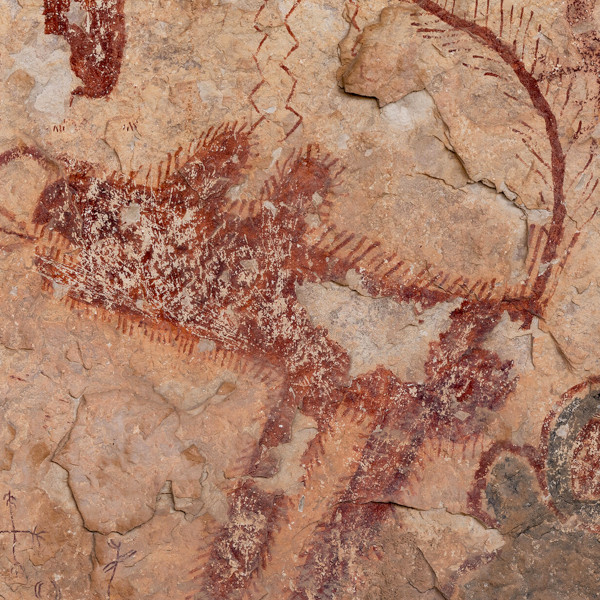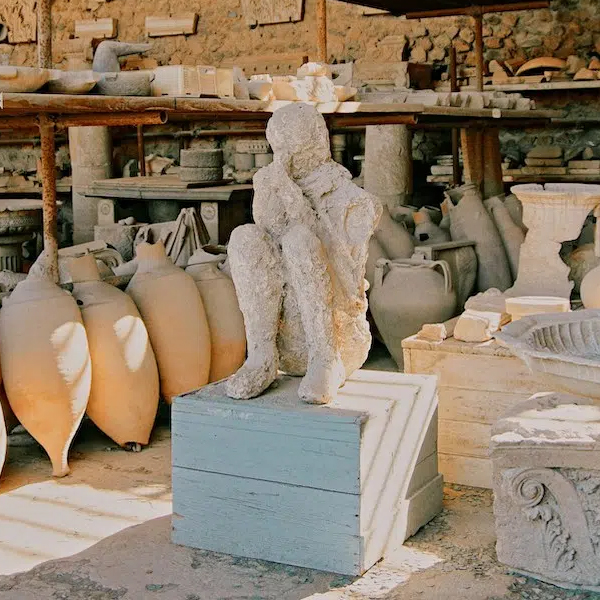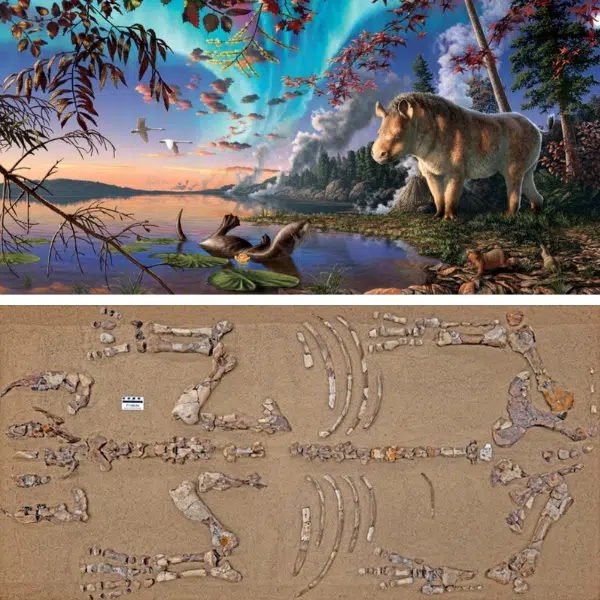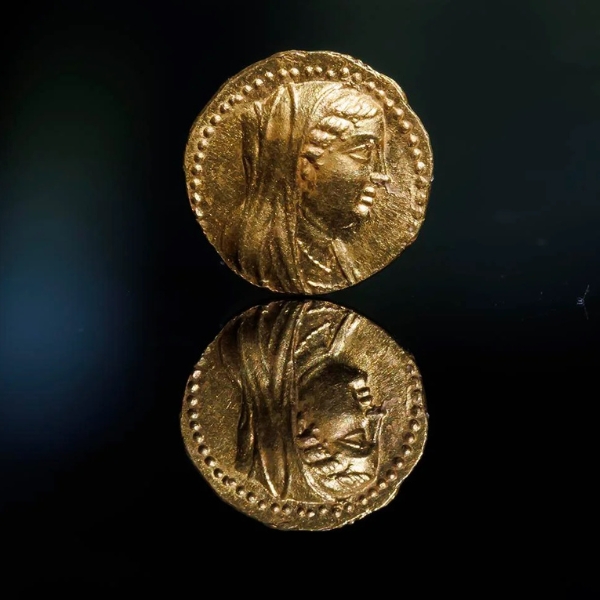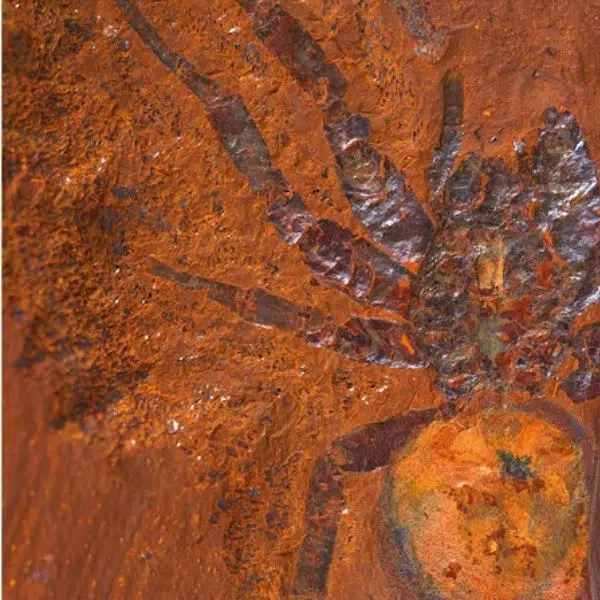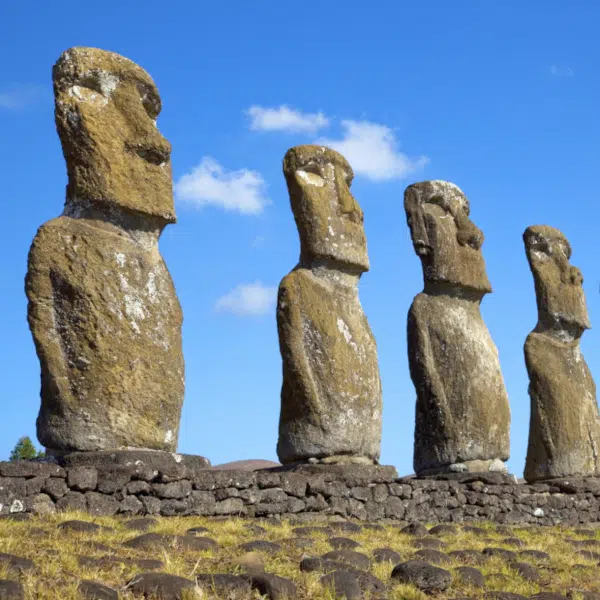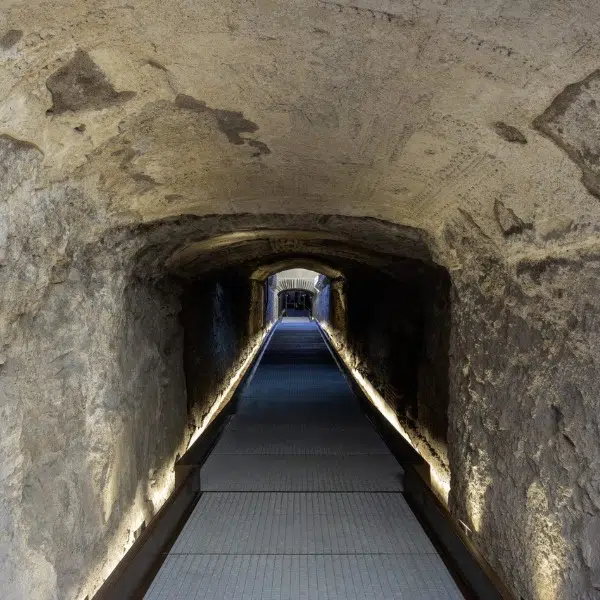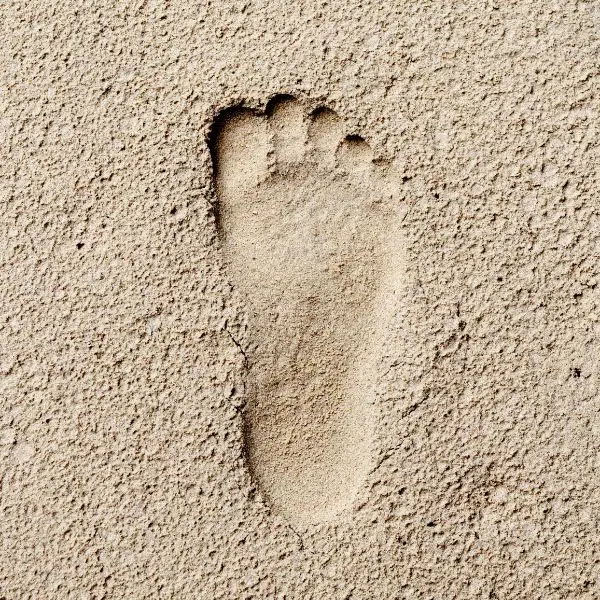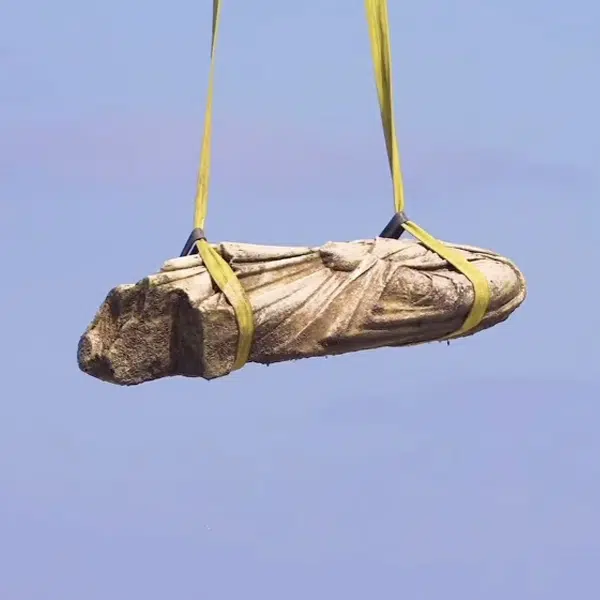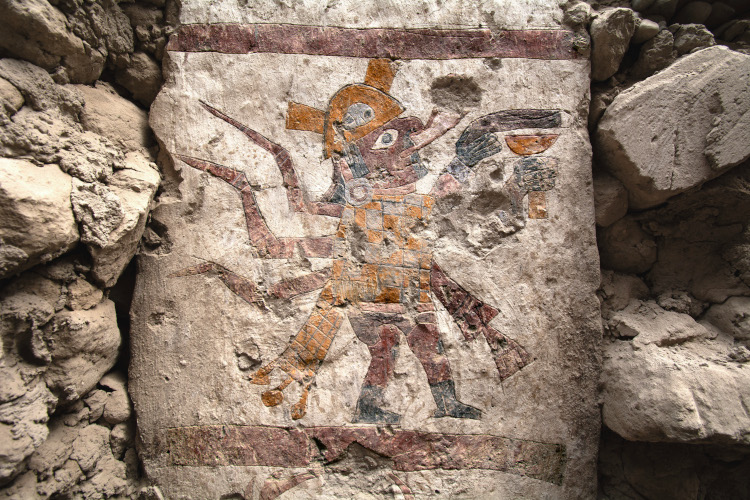
A recent archeological discovery has taken aback researchers in Peru. A stunningly painted throne room from the Moche culture was found in Pañamarca, located atop a granite hill in the lower Nepeña Valley. The Moche, a society that lived between about 350 and 850 C.E. in northern Peru, has been at the center of exciting findings in the last few years—yet none may be as revealing as this one.
The colorful wall paintings in Pañamarca were first recorded in the 1950s. Moche culture stands out for its opulent tombs, compelling architecture and art, and ornate religious imagery. “They depict priests and warriors in procession, battles between supernatural beings, an unusual two-faced man, and scenes of ceremonial activities related to human captives,” explain the researchers. “But a throne room for a queen has never been seen before at Pañamarca, nor anywhere else in ancient Peru.”
The discovery was carried out by the Archaeological Landscapes of Pañamarca, a research project founded in 2018 by Peruvian and American archaeologists to better understand the pre-Columbian activity in the area. The adobe throne was found in a space known as the “Hall of the Moche Imaginary,” surrounded by walls and pillars illustrating four different scenes of a powerful woman. The images depict the figure—associated with the crescent moon, the sea and its creatures, and with the arts of spinning and weaving—receiving visitors in procession and seated upon a throne.
The recently uncovered paintings also include a scene of a full workshop of women spinning and weaving, as well as a procession of men carrying textiles and the female leader’s crown—which features her braids. “Pañamarca continues to surprise us,” says Lisa Trever, professor of art history at Columbia University, “not only for the ceaseless creativity of its painters but also because their works are overturning our expectations of gender roles in the ancient Moche world.”
For now, the archeologists will do their best to determine if the enigmatic female figure painted on the walls of the throne room is human or mythical (a priestess, goddess, or queen). However, the physical evidence of the throne, including the erosion of its back support and the recovery of greenstone beads, fine threads, and even human hair, all point to it being occupied by a real living person—a seventh-century female leader of Pañamarca.
As thrilling as this finding is, the mural paintings of Pañamarca are not currently accessible to tourism. “If left open to the elements without a permanent conservation program on-site, the invaluable murals of Pañamarca would begin to deteriorate immediately, as we know happened to the murals first uncovered in the 1950s,” project director Jessica Ortiz Zevallos explains.
Still, the team is working to document and digitalize the imagery, preserving it for future generations who want to learn more about this culture and its legacy.
Researchers have found a stunningly painted throne room from the Moche culture was found in Pañamarca.
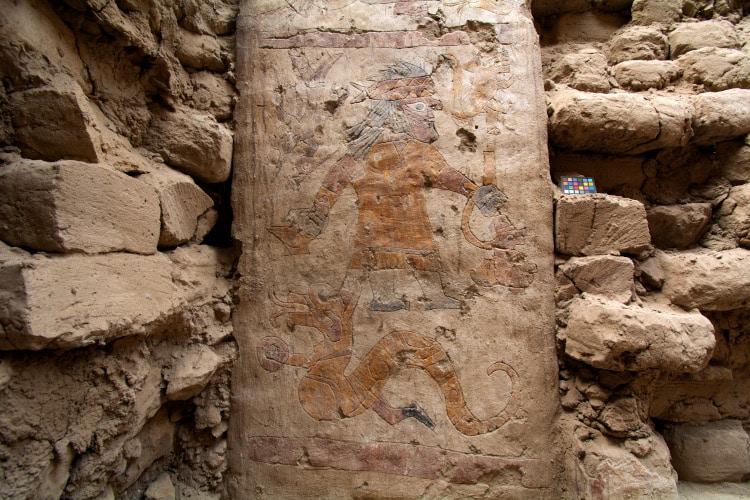
The discovery was made by the Archaeological Landscapes of Pañamarca, a research project founded in 2018 to better understand the pre-Columbian activity in the area.
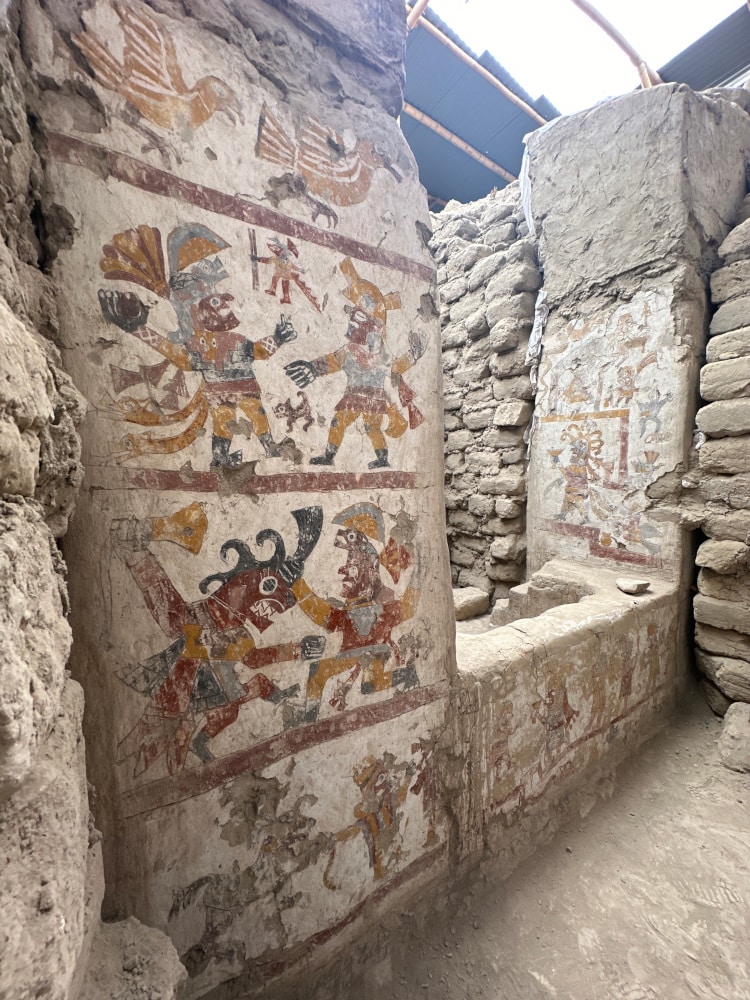
The adobe throne was found in a space known as the “Hall of the Moche Imaginary,” surrounded by walls and pillars depicting four different scenes of a powerful woman.
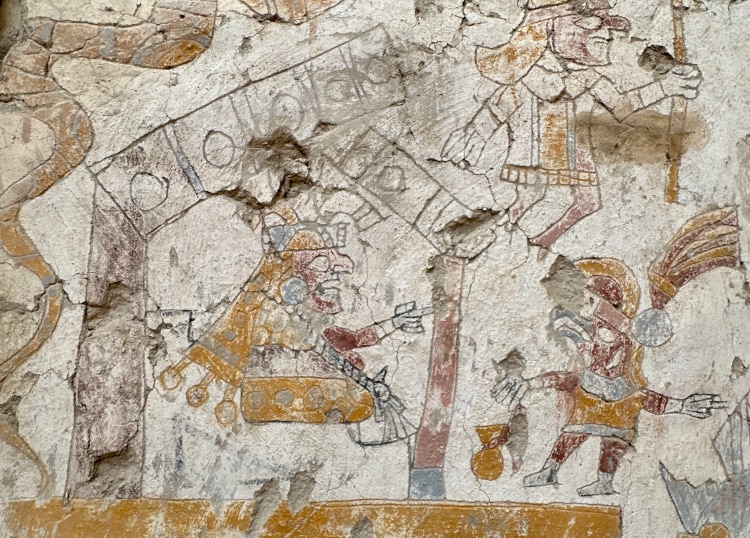
The images depict the figure—associated with the crescent moon, the sea and its creatures, and with the arts of spinning and weaving—receiving visitors in procession and seated upon a throne.

For now, the archeologists will do their best to determine if the enigmatic female figure painted on the walls of the throne room is a priestess, goddess, or queen.
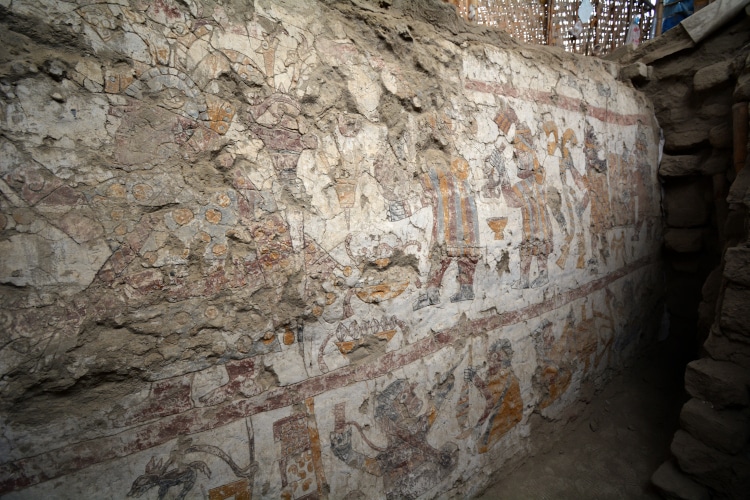
However, the physical evidence of the throne suggests that it was occupied by a real living person—a seventh-century female leader of Pañamarca.
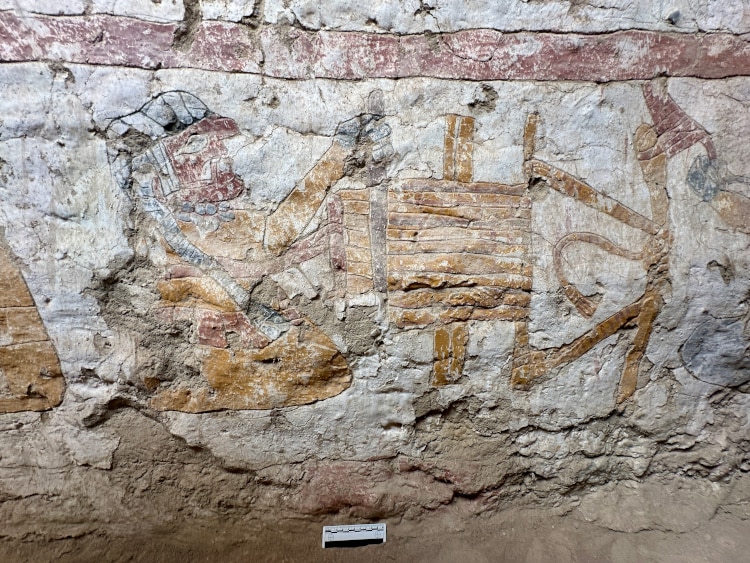
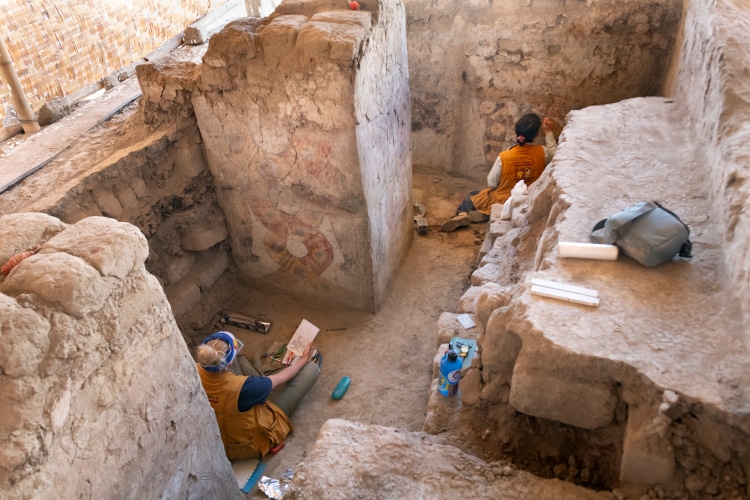
Paisajes Arqueológicos de Pañamarca: Website | Instagram
All images via the Denver Museum of Nature & Science.
Related Articles:
Ancient Rock Art Depicts Psychedelic Music and Dance in Peru
16-Million-Year-Old Skull of Extinct Species of Giant Dolphin Discovered in Peru
Giant New Nazca Lines Are Discovered in Peru Through Use of AI
303 Newly Discovered Nazca Geoglyphs Depict a Wide Array of Animals and Humanoids











































































